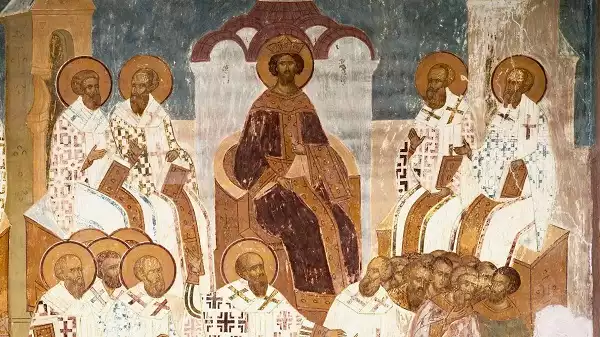
Condemnation of Nestorianism and Affirmation of Mary as Theotokos
In 431 AD, a pivotal event in Christian history occurred: the Third Ecumenical Council of Ephesus. This Council, a significant gathering of Christian bishops, was convened to address the growing controversy surrounding Nestorianism, a doctrine named after Nestorius, then Patriarch of Constantinople. Central to the Council’s agenda was the debate over Nestorianism’s view of Christ’s nature and its rejection of the term “Theotokos” for Mary, the mother of Jesus. Nestorianism posited that Christ had two separate natures, divine and human, a stance that was causing deep rifts within the Church. The Council of Ephesus, under the guidance of Saint Cyril of Alexandria, vehemently opposed this view, asserting the unity of Christ’s nature as both human and divine, an integral belief in Christian theology. This stance was not merely a theological debate but a matter of profound spiritual and doctrinal significance, as it pertained to the very nature of Christ and his relationship to humanity and divinity. Consequently, the Council declared Nestorianism a heresy, upholding the term “Theotokos,” meaning “God-bearer,” as a rightful title for Mary. This decision was a decisive moment in Church history, reaffirming key doctrinal beliefs and shaping the trajectory of Christian theology. The Council’s ruling not only condemned Nestorianism but also played a crucial role in defining the orthodox understanding of Christ’s nature, a cornerstone of Christian faith. Moreover, this Council’s outcomes significantly influenced the development of Christian doctrine, emphasizing the importance of ecumenical dialogue in resolving doctrinal disputes. The Third Ecumenical Council of Ephesus, by addressing these vital issues, solidified its role as a landmark event in the history of the Christian Church, one whose implications continue to resonate through the centuries.
Impact and Legacy of the Third Council
The Third Ecumenical Council of Ephesus in 431 AD not only resolved a significant theological dispute but also left an enduring impact on Christian doctrine and ecclesiastical unity. By denouncing Nestorianism and affirming Mary as Theotokos, the Council reinforced the doctrine of Christ’s dual nature, a concept central to Christian theology. This decision had far-reaching consequences, shaping the understanding of Jesus Christ’s divine and human natures in a unified form, a belief fundamental to Christian faith. The Council’s affirmation of Mary as Theotokos also had a profound impact on Marian devotion, elevating her status and reverence within the Christian community. Additionally, the Council’s rulings influenced the direction of Christian liturgy and prayer, embedding the Theotokos concept into the fabric of worship. The legacy of the Council extends beyond theological discourse, impacting Christian art, culture, and spirituality. This significant event not only resolved a pressing doctrinal issue but also contributed to the development of a cohesive Christian identity, fostering a deeper understanding of Christ’s nature and Mary’s role in salvation history. The decisions made at the Third Ecumenical Council of Ephesus continue to resonate in contemporary Christian thought, underscoring its enduring significance in the history of the Church.
References
- Grillmeier, Aloys. Christ in Christian Tradition. Westminster John Knox Press, 1975.
- Kelly, J.N.D. Early Christian Doctrines. HarperOne, 1978.
- Meyendorff, John. Christ in Eastern Christian Thought. St Vladimir’s Seminary Press, 1987.
- “Medieval Sourcebook: Council of Ephesus, 431.” Fordham University. Accessed January 3, 2024.
- Pelikan, Jaroslav. The Christian Tradition: A History of the Development of Doctrine, Vol. 1: The Emergence of the Catholic Tradition (100-600). University of Chicago Press, 1971.
- “Review of ‘The Acts of the Council of Chalcedon’.” Bryn Mawr Classical Review. Accessed January 3, 2024.
